Hamzatul Wasl is a non-permanent hamzah used at the start of specific Arabic words, pronounced only when beginning recitation and dropped during connection. Found in definite articles, certain verbs, and a list of common nouns, its pronunciation varies based on the third letter’s vowel.
This special hamzah is the key to a smooth, flowing, and correct recitation. It allows you to connect words gracefully, just as our beloved Prophet Muhammad (peace be upon him) recited. Let’s walk through its rules together, step by step, with patience and clarity.
Before we dive into the specific rules, it is essential to understand what hamzatul wasl is and the vital role it plays in your recitation. Think of it not as a letter, but as a bridge that connects your words.
What is Hamzatul Wasl?
Hamzatul wasl is a temporary hamzah placed at the beginning of certain words. It is only pronounced when you start reciting from that word. If you are connecting it to a word before it, its sound disappears completely.
1. Why is it Called the “Connecting Hamzah”?
It gets its name, wasl (which means “connection” or “joining”), because its primary function is to connect the word before it with the word it is attached to.
This prevents an awkward pause on a silent letter and ensures a melodious flow.
2. How to Identify Hamzatul Wasl in the Mushaf
In the Mushaf (the written Quran), you can easily recognize hamzatul wasl. It is an alif (ا) that has a small symbol resembling the head of the letter sad (ص) written on top of it. When you see this sign, you know you are dealing with a hamzatul wasl.
Where to Find Hamzatul Wasl
Hamzatul Wasl doesn’t appear randomly. It is found in very specific types of words in the Arabic language, which makes it easier to identify.
Knowing these categories will help you anticipate the rule before you even see the small sign (ٱ) in the Mushaf.
1. Hamzatul Wasl in Definite Articles (ال)
As we covered, the hamzah in the definite article “Al-” (ال) is always a Hamzatul Wasl. This is its most common location in the Quran.
2. Hamzatul Wasl in Verbs
Hamzatul Wasl appears in the command form (Amr) of three-letter verbs, such as “اقْرَأْ” (Iqra’ – Read!).
Hamzatul Wasl also appears in the past tense and verbal nouns of five-letter and six-letter verbs, like “اسْتَغْفَرَ” (istaghfara – he sought forgiveness).
3. Hamzatul Wasl in Nouns
Hamzatul Wasl is found in a special list of ten standard nouns in Arabic. Of these, only seven are found in the pages of the Holy Quran.
These nouns are:
- ism (اسْم – name)
- ibn (ابْن – son)
- ibnah (ابْنَة – daughter)
- imru’ (امْرُؤ – man)
- imra’ah (امْرَأَة – woman)
- ithnayn (اثْنَيْن – two, masculine)
- ithnatayn (اثْنَتَيْن – two, feminine)
“إِذْ قَالَتِ ٱمْرَأَتُ عِمْرَٰنَ”
“Idh qālatimra’atu ‘Imrān”
“[Mention, O Muhammad], when the wife of ‘Imran said” (Aal-i-Imran:35).
When reading this verse, the hamzah in “imra’atu” is dropped, but if you were to start from that word, you would say “Imra’atu” with a clear kasra.
What are the Main Rules of Hamzatul Wasl?
Learning Hamzatul Wasl is simpler than you might think. The rules are centered on just two key situations.
First, we must know how to pronounce it when we begin a verse or a word with it. Second, we must know when to drop it, which is whenever we are connecting from a word that comes before it.
Rules of Pronouncing Hamzatul Wasl at the Beginning of Recitation
When a word beginning with Hamzatul Wasl is the first word you pronounce, you cannot remain silent. You must give the hamzah a vowel sound to begin.
This starting vowel can be a kasra (i), a damma (u), or a fatha (a). The correct vowel is determined by looking at the vowel on the third letter of the word.
1. When is it Pronounced with a Fathah (a-sound)?
The rule here is very simple and has no exceptions. The hamzatul wasl is only ever pronounced with a fathah (the “a” sound) when it appears with the definite article “ال” (Al-).
“ٱلْحَمْدُ لِلَّهِ رَبِّ ٱلْعَٰلَمِينَ”
“Alḥamdu lillāhi rabbil-‘ālamīn”
“All praise is for Allah, Lord of the worlds” (Al-Fatihah:2).
When starting the Surah, the hamzah in “Alḥamdu” is clearly pronounced with a fathah.
2. When is it Pronounced with a Kasra (i-sound)?
The kasra (the “i” sound) is the most common starting vowel for hamzatul wasl. It is used in two main situations: with specific nouns and with most verbs. It is also used if the third letter of a verb has a fathah or a kasra.
“ٱهْدِنَا ٱلصِّرَٰطَ ٱلْمُسْتَقِيمَ”
“Ihdināṣ-ṣirāṭal-mustaqīm”
“Guide us to the straight path” (Al-Fatihah:6).
Here, we start the verb “Ihdinā” with a kasra because its third letter, the “dāl” (د), has a kasra. Mastering this foundational rule is a key first step.
3. When is it Pronounced with a Dammah (u-sound)?
The hamzatul wasl is pronounced with a dammah (the “u” sound) in one specific case. This occurs when the third letter of the verb has a dammah that is original to the word’s structure.
“ٱدْخُلُوهَا بِسَلَٰمٍ ءَامِنِينَ”
“Udkhulūhā bisalāmin āminīn”
“[And it will be said], “Enter it in peace, safe and secure.”” (Al-Hijr:46).
The verb “Udkhulū” begins with a dammah because its third letter, the “khā” (خ), has a dammah.
Our Quranica’s Learn Tajweed for beginners Course is designed to build your confidence from the ground up.
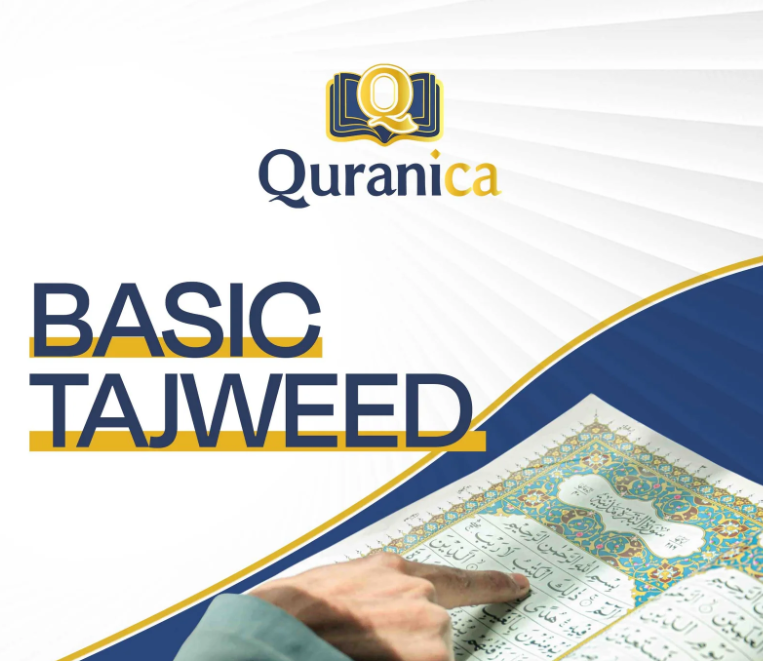
Now we come to the second primary rule, which gives Hamzatul Wasl its name, the “connecting hamzah.” This rule is beautifully simple.
The Rule of Dropping Hamzatul Wasl in Continuous Recitation
When you connect a word ending in a vowel to a word that begins with Hamzatul Wasl, the Hamzatul Wasl is dropped completely. You do not pronounce it at all. Your tongue flows from the end of the first word to the second letter of the next word.
Examples of Dropping Hamzatul Wasl in Continuous Recitation
“بِسْمِ اللَّهِ الرَّحْمَٰنِ الرَّحِيمِ”
“Bismillāhir-Raḥmānir-Raḥīm”
“In the name of Allah, the Entirely Merciful, the Especially Merciful.” (Surah Al-Fatihah, 1:1)
We read ‘Bismillāhi’ and connect directly to the ‘r’ of ‘Ar-Raḥmān,’ skipping the ‘a’ sound entirely.
“وَاسْتَغْفِرُوا رَبَّكُمْ ثُمَّ تُوبُوا إِلَيْهِ”
“Wastaghfirū Rabbakum thumma tūbū ilayh”
“And ask forgiveness of your Lord and then repent to Him.” (Surah Hud, 11:90)
The ‘wa’ connects directly to the silent ‘s’ sound, producing ‘was-taghfirū’. The Hamzatul Wasl is silent.
Rules of How a Preceding Letter Affects Hamzatul Wasl
Because hamzatul wasl is silent when connecting, the silent letter at the end of the preceding word must be given a temporary vowel. This is a crucial rule to avoid the ungrammatical meeting of two silent letters.
1. The Rule of Tanween Before Hamzatul Wasl
When a word ending in tanween (an, in, un) is followed by hamzatul wasl, the silent ‘n’ sound of the tanween is given a temporary kasra.
An Example of The Rule of Tanween Before Hamzatul Wasl
“جَزَآءً ٱلْحُسْنَىٰ”
“Jazā’anil-ḥusnā”
“the best [reward]” (Al-Kahf:88).
The tanween on “Jazā’an” is read as “Jazā’anil” to connect it smoothly to “al-ḥusnā.” The best way to solidify your understanding is through application.
You can test your skills with our interactive Quranica’s Tajweed test and practice module.

2. The Rule of the Preposition “Min” (مِنْ) Before Hamzatul Wasl
As an exception to the general rule of using a kasra, when the preposition “min” (مِنْ) comes before hamzatul wasl, its silent noon is given a fathah.
An Example of the Preposition “Min” (مِنْ) Before Hamzatul Wasl
“مِّنَ ٱلْجِنَّةِ وَٱلنَّاسِ”
“Minal-jinnati wan-nās”
“From among the jinn and mankind” (An-Nas:6).
The word “min” becomes “mina” to connect to the next word, “al-jinnati.”
3. The Rule of the Plural Meem (مِيمُ الْجَمْع) Before Hamzatul Wasl
When a word ends in a silent meem indicating a plural “you” or “them” (كُمْ or هُمْ), that meem is given a dammah if followed by hamzatul wasl.
An Example of the Plural Meem (مِيمُ الْجَمْع) Before Hamzatul Wasl
“أَلْهَىٰكُمُ ٱلتَّكَاثُرُ”
“Alhākumut-takāthur”
“Competition in [worldly] increase diverts you” (At-Takathur:1).
The word “Alhākum” becomes “Alhākumu” to link seamlessly to “at-takāthur.”
Advanced Special Rules for Hamzatul Wasl
As you progress in your Tajweed journey, you will encounter a few special cases. Do not worry; these rules are consistent and become easy with practice.
1. What Happens When a Vowel is “Borrowed”?
In a few rare verbs, the third letter has a dammah, but this dammah is not original to the word—it is “borrowed” for phonetic reasons.
In these cases, you ignore the dammah and start with a kasra, returning to the word’s origin. These verbs are: امْشُوا, اقْضُوا, ابْنُوا, امْضُوا, ائْتُوا.
“أَنِ ٱمْشُوا۟ وَٱصْبِرُوا۟ عَلَىٰٓ ءَالِهَتِكُمْ”
“Animshū waṣbirū ‘alā ālihatikum”
“Continue, and be patient over [the defense of] your gods” (Sad:6).
Although the third letter has a dammah, we would start this word as “Imshū” with a kasra, because the dammah is not original.
Navigating these advanced cases requires practice and expert guidance, which is a core focus of our Quranica’s Advanced Tajweed Course.
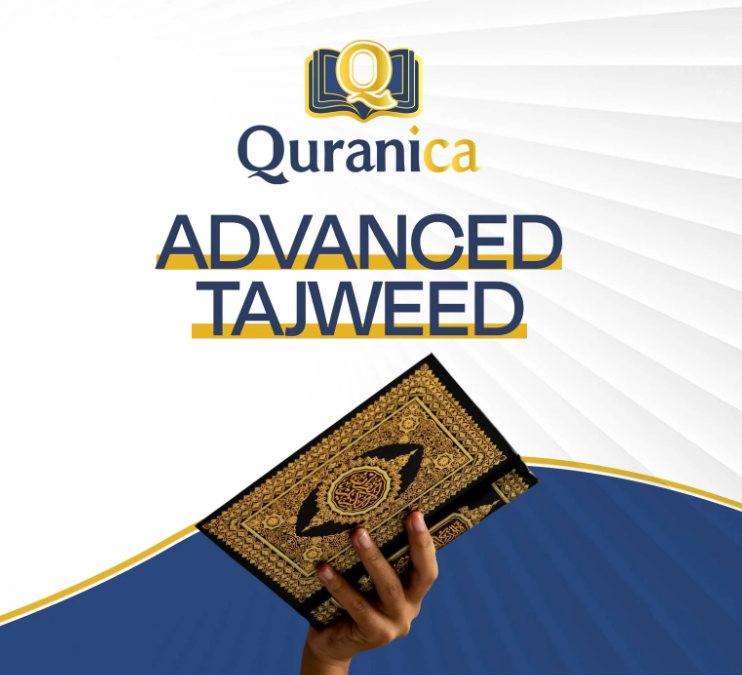
2. When Hamzatul Wasl Meets the Hamzah of Interrogation
If the hamzah of questioning (أ), which is a hamzatul qat’ (a permanent hamzah), comes before a word starting with hamzatul wasl in “ال”, the hamzatul wasl is dropped and the questioning hamzah is pronounced clearly. When this happens before the name of Allah, it is stretched.
“قُلْ ءَآللَّهُ أَذِنَ لَكُمْ”
“Qul āllāhu adhina lakum”
“Say, “Is it Allah who has permitted you…”” (Yunus:59).
Here, the combination of the questioning hamzah and the hamzatul wasl of “Allāh” creates a stretched “Āllāhu” sound.
Difference between Hamzatul Wasl and Hamzatul Qat’
To master Hamzatul Wasl, you must be able to distinguish it from its counterpart, Hamzatul Qat’. This distinction is fundamental to proper pronunciation.
Unlike the temporary Hamzatul Wasl, Hamzatul Qat’ (همزةُ القَطْع) is a permanent, fixed hamzah. It is always pronounced, no matter where it appears in a word or whether you are starting or continuing your recitation.
Hamzatul Qat’ is visually marked with the head of an ‘ayn’ (ء) above or below the alif (أ, إ).
Hamzatul Wasl Examples in the Quran
Let’s review with a few final examples to bring all this knowledge together. Reading and listening are the keys to mastery.
“قَالَ ابْنَ أُمَّ إِنَّ الْقَوْمَ اسْتَضْعَفُونِي”
“Qālabna umma innal-qawmas-taḍ’afūnī” “[Moses] said,
“O son of my mother, indeed the people overpowered me” (Surah Al-A’raf, 7:150)
This shows the Hamzatul Wasl in ‘ibna’ being dropped entirely when connected to the preceding word ‘qāla’.
“اقْرَأْ بِاسْمِ رَبِّكَ الَّذِي خَلَقَ”
“Iqra’ bismi Rabbikal-ladhī khalaq”
“Recite in the name of your Lord who created” (Surah Al-‘Alaq, 96:1).
As the first word of the first revelation, we start ‘Iqra” with a kasra because the third letter of the verb (rā’) has a fatha.
“ارْكُضْ بِرِجْلِكَ ۖ هَٰذَا مُغْتَسَلٌ بَارِدٌ وَشَرَابٌ”
“Urkuḍ birijlika hādhā mughtasalum bāriduw wa sharāb”
“[So he was told], “Strike [the ground] with your foot; this is a [spring for] a cool bath and drink.”” (Surah Sad, 38:42).
This is a clear example of starting with a damma (‘Urkuḍ’) because the third letter of the verb (kāf) has a required damma.
“وَقَالَتِ امْرَأَتُ فِرْعَوْنَ قُرَّتُ عَيْنٍ لِّي وَلَكَ”
“Wa qālati-mra’atu Fir’awna qurratu ‘aynil-lī wa lak”
“And the wife of Pharaoh said, “[He will be] a comfort of the eye for me and for you.”” (Surah Al-Qasas, 28:9).
This beautifully illustrates the dropped hamzah, as the sound flows from ‘qālati’ directly to ‘mra’atu,’ skipping the starting vowel of the word ‘imra’atu’.
“الرَّحْمَٰنُ عَلَّمَ الْقُرْآنَ”
“Ar-Raḥmānu ‘allamal-Qur’ān”
“The Most Merciful, Taught the Qur’an” (Surah Ar-Rahman, 55:1-2).
When beginning this Surah, the Hamzatul Wasl in ‘Ar-Raḥmān’ is pronounced with a fatha, the exclusive starting vowel for the definite article ‘Al-‘.
Hamzatul Wasl Worksheet
True understanding comes from applying what we learn. Now that we have covered the theory, let’s put your knowledge into practice with a few exercises directly from the Quran.
For each example, ask yourself two questions: How do I pronounce it when starting?
And what happens when I connect it from the word before? This is the core of mastering Hamzatul Wasl.
Exercise 1: The Definite Article
Consider the very first word of Surah Al-Qari’ah:
“الْقَارِعَةُ”
“Al-qāri’ah”
“The Striking Calamity” (Surah Al-Qari’ah, 101:1)
Question: If you start reciting with this word, what vowel does the Hamzatul Wasl take?
Answer: It takes a fatha (‘a’ sound). As we learned, the Hamzatul Wasl in the definite article “Al-” is the only case where we begin with a fatha.
Now, consider the second verse, where it is preceded by another word:
“مَا الْقَارِعَةُ”
“Mal-qāri’ah”
“What is the Striking Calamity?” (Surah Al-Qari’ah, 101:2)
Here, the Hamzatul Wasl is dropped completely, and the ‘a’ sound from ‘mā’ flows directly into the silent ‘l’ of ‘al-qāri’ah’.
2. Exercise 2: The Verb with a Kasra
Let’s look at a verb from Surah Al-Baqarah.
“اسْتَعِينُوا بِالصَّبْرِ وَالصَّلَاةِ”
“Ista’īnū biṣ-ṣabri waṣ-ṣalāh”
“Seek help through patience and prayer.” (Surah Al-Baqarah, 2:153)
Question: How do we determine the starting vowel for “اسْتَعِينُوا”?
Answer: We look at the third letter, which is the ‘tā” (ت). It has a fatha. The rule states that if the third letter of the verb has a fatha or a kasra, the Hamzatul Wasl begins with a kasra (‘i’ sound). Therefore, we begin by saying ‘Ista’īnū’.
Now, what if we place a “wa” (وَ) before it, as in “وَاسْتَعِينُوا”? The connection rule applies, and the Hamzatul Wasl becomes silent, creating the sound ‘Wasta’īnū’.
3. Exercise 3: The Verb with a Damma
Finally, let’s examine a command verb from Surah Yusuf.
“ادْخُلُوا مِصْرَ إِنْ شَاءَ اللَّهُ آمِنِينَ”
“Udkhulū Miṣra in shā’a Allāhu āminīn”
“Enter Egypt, if Allah wills, safe [and secure].” (Surah Yusuf, 12:99)
Question: What vowel do we use to start the word “ادْخُلُوا”?
Answer: We check the third letter, the ‘khā” (خ). It has a required damma. This is the one case where the Hamzatul Wasl must also take a damma (‘u’ sound). We begin with ‘Udkhulū’.
If this word were preceded by a connecting word, like “قَالَ ادْخُلُوا” (Qālad-khulū), the hamzah would be skipped entirely. This constant practice of starting and connecting is the key to effortless recitation.
Master Hamzatul Wasl with Quranica
At Quranica, we bridge the gap between knowledge and beautiful application. Our mission is to make learning the Quran accessible, authentic, and deeply rewarding.
Imagine learning from teachers who are not only native Arabic speakers but are also graduates of the prestigious Al-Azhar University.
Our instructors hold Ijazah (licenses to teach Quran) and have years of dedicated experience guiding non-Arabic speakers just like you.
At Quranica, we offer:
- Expert Instruction: Learn directly from qualified, Azhar-certified Arab tutors with Ijazah.
- Tailored Learning: From our Learn Tajweed for Beginners course to our Advanced Tajweed program, we have a path for you. We also offer specialized classes for sisters, adults, and kids.
- Flexible Programs: Choose from a wide range of courses, including Quran Memorization (Hifz), Ijazah Programs, and the Ten Qirat.
- Competitive & Affordable plans to make high-quality Quranic education available to everyone.
Whether you’re interested in our Advanced Tajweed Course, our Online Ijazah Course, or our Hifz Program for Adults, we have the expertise to help you achieve your goals.
- Learn Quran with Tajweed (for all levels)
- Quran Memorization (Hifz) Programs
- Ijazah Course
- Islamic Studies
- Ten Qirat
- Arabic Lessons for Beginners
Explore our full range of courses.
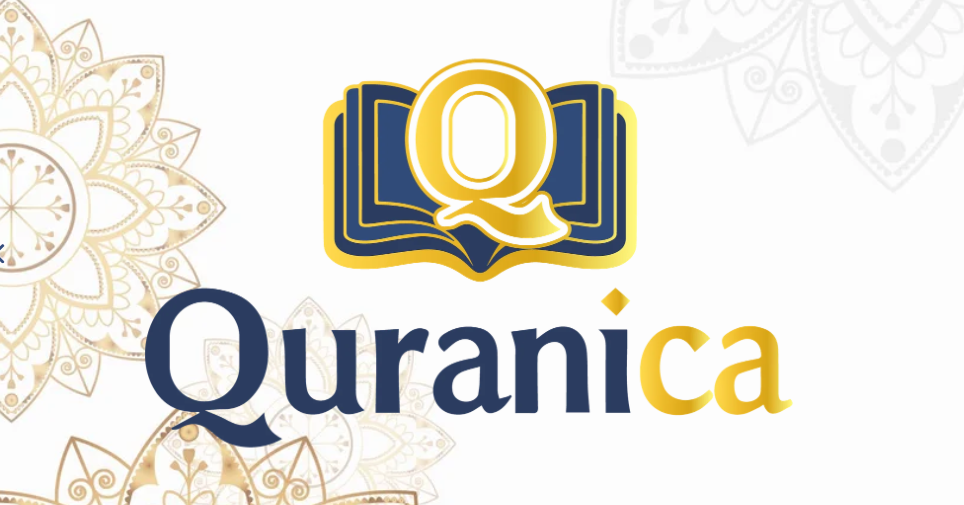
Conclusion
Hamzatul Wasl is a special type of hamzah that only appears at the beginning of certain words and is pronounced only when starting from that word. When the word is connected to a previous one, the hamzah is dropped entirely, allowing for smooth and flowing recitation.
You can find Hamzatul Wasl in three main places: in the definite article “Al-“, in verbs (especially in the command forms and verbal nouns of 5- or 6-letter verbs), and in a fixed group of nouns—like ism, ibn, and imra’ah. In the Quran, its presence is marked with a small ص-shaped symbol over the alif.
When starting with a Hamzatul Wasl word, the correct vowel is determined by the third letter: use fatha with the definite article, kasra if the third letter has a fatha or kasra, and damma only if the third letter has an original damma.
If a word comes before Hamzatul Wasl, the hamzah is dropped, and a connecting vowel is added to the end of the previous word to prevent two consecutive silent letters. These vowels depend on the case—such as kasra after tanween or fatha after “min”.
Advanced cases include ignoring non-original dammas and dropping Hamzatul Wasl when preceded by a question hamzah.





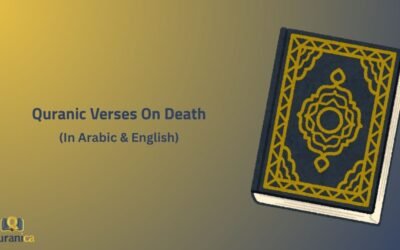

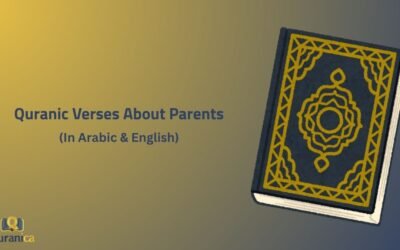
0 Comments